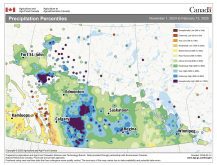The proposed tax changes set to come into effect this year and next as a result of the July 18 finance department discussion paper may have significant implications for your farm.
My colleagues and I have run various scenarios to determine how clients may be affected, and what we’ve discovered is concerning. Farmers need to get involved and let Ottawa know the negative effects these changes will have on them, their families and businesses.
In the first scenario, related to income sprinkling, we’ll use a farm corporation in which Mom and Dad are both involved in the business. They have three kids, aged 18 to 24, all of whom are in post-secondary education and involved in the operations, although likely not significantly enough to meet the new “actively engaged on a regular, continuous, and substantial” basis as required by the draft legislation.
Read Also

Huge Black Sea flax crop to provide stiff competition
Russia and Kazakhstan harvested huge flax crops and will be providing stiff competition in China and the EU.
Each of the children is paid $25,000 a year in dividends from the corporation.
The dividend does not create significant additional personal tax because the company has already paid tax on this, so most or all of it is available to cover tuition and living costs related to attending school. This means that the students have close to $75,000 ($25,000 each) per year available to cover educational costs.
Under the new rules, because it would likely be impossible for a full-time student to meet the “actively engaged on a regular, continuous, and substantial” threshold, they would have to pay tax on the dividend at the split income (TOSI) rate, which is approximately 40 percent in Saskatchewan.
In order to get the same $75,000 to cover education costs, the corporation would have to pay the kids a total of $125,000, on which the kids would pay $50,000 in tax.
Over a four-year post-secondary education period, that’s a $200,000 additional burden to the farm.
This significantly reduces your options when it comes to paying for your farming child’s post- secondary education costs.
A solution might be to pay the dividends you would have given the children to the parents, which might be taxed at a somewhat lower rate, assuming their dividend in total meets the “reasonableness” test for persons older than 24.
The second scenario relates to selling your farm.
You’ve probably heard many experts saying that, as a result of the proposed tax changes, you might be better off selling to a third party than transferring your farm to the next generation.
If Section 246.1 of the new legislation isn’t revised before the rules go through, that may be true.
Under the current rules, the parents could give their farm corporation shares to their children. The company could then buy the farmland from the parents, and the parents would shelter the gain on the land using their capital gains exemption.
Under the new rules, there’s no immediate tax on giving the shares to others. However, depending on the future involvement of the kids in the farm, they may be subject to TOSI on future dividends and may not be able to use their capital gains exemption should they sell the shares to a third party.
Most concerning is the fact that the transfer of the land to the children’s company may create a dividend to the parents, which would be taxed at a high rate.
This is because the wording of Section 246.1 is nebulous. It talks about the purpose of the transaction, and if one of the purposes is to remove cash from a non-arm’s length corporation (the children’s farm company), the capital gain eligible for the capital gain exemption is converted to a taxable dividend.
On a gain of $1 million, this could convert a tax-free transaction to a $400,000 tax liability and up to $800,000 on a $2 million gain. However, there are no such issues if the land is sold to the arm’s length neighbour’s company.
The same situation could apply to production quota. By selling to a third party, you pay tax on half the income or use your capital gain exemption if the quota is owned personally.
By selling to your children’s farming corporation, you could end up paying 40 percent on that income if the Canada Revenue Agency decides one of your purposes was to avoid taxes.
Like other tax planners, I’m worried for farmers.
The legislation related to income sprinkling is unnecessarily complex, adding significant stress to farmers and extra compliance costs in an attempt to determine what each person’s contribution is worth and whether they are subject to the new rules.
There is also a major concern with farmland, partnership interests and production quota transactions when determining whether the purpose test in section 246.1 is met, which is a highly subjective provision.
With a capital-intensive farming industry based on continually escalating values of farmland and production quota, you could be hit with a major unexpected tax bill if the CRA has interpreted the legislation differently than you did.
As well, the rulings and court precedents relied on for the last 40 years since the last major tax reform will have to be rebuilt under the new legislation, a process that takes multiple years.
The government consultation period deadline is Oct. 2, and MNP will be submitting its concerns. I encourage farmers to talk to their MP before the deadline to try to get this proposed legislation changed. Otherwise, we’ll face years of uncertainty, and farmers risk losing a significant portion of the net worth they’ve worked so hard to build.

















